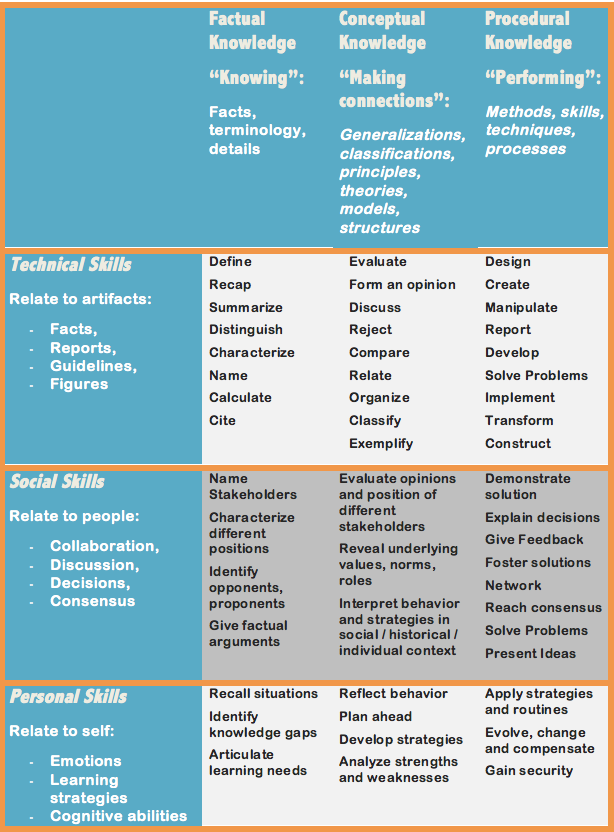Teaching Objectives and Learning Goals
I am currently working on a series of course design workshops and have been thinking about the objectives of teachers and learners. Teaching objectives are both an instructional design tool, that allows creating meaningful assignments, and an instructional design element, that can precede a learning unit, e.g., as part of the syllabus in form of learning goals. It is a way for instructors describe their best intentions for the course (Stanny, Gonzales & McGowan, 2015). Clear objectives produce transparency for learners and instructors – and it does not have to be a one-way street: If the instructor wants to emphasize learner autonomy, students can be encouraged to state their own personal learning goals and to modify or critique the instructor’s teaching objectives.
Defining teaching objectives makes the instructor aware of what is to be achieved with a learning module or course. Phrasing teaching objectives as specific as possible helps to achieve clarity. To this end it is helpful to follow a structured approach. In the 1950ies, the psychologist Benjamin Bloom developed gis influential approach to systemize teaching in a taxonomy. In 2001, Anderson and Krathwohl proposed a modified version of Bloom’s Taxonomy that comprises the following steps (ordered from basic to complex): Remembering, Understanding, Applying, Analyzing, Evaluating, Creating.
- Remembering, e.g., know, define, identify, recall, relate, memorize, list, repeat, record, name, recognize, acquire
- Understanding, e.g., exemplify, classify, summarize, infer, compare, explain, locate, discuss, report, illustrate, conclude, differentiate
- Applying, e.g., execute, implement, organize, relate, present, practice, calculate, show, exhibit
- Analyzing, e.g., compare, probe, inquire, examine, contrast, detect, report, deduce, categorize, survey, inspect, scrutinize
- Evaluating, e.g., check, critique, recommend, predict, judge, argue, appraise, value, choose, decide
- Creating, g., generate, plan, reorganize, assemble, arrange, write, construct, modify, plan, invent, formulate
The matrix “Teaching Objectives, Knowledge and Skills” combines objectives with different sets of competencies: Dealing with objects, dealing with other people and dealing with yourself. It offers exemplary verbs to describe each level.
Further Reading and References:
Anderson, L. W.; Krathwohl, D. R. [Eds.] (2001). A Taxonomy For Learning, Teaching, And Assessing: A Revision of Bloom’s Taxonomy of Educational Objectives. New York: Addison Wesley Longman.
Stanny, C., Gonzalez, M., and McGowan, B., (2015). Assessing the culture of teaching and learning through a syllabus review. Assessment & Evaluation in Higher Education, 40 (7), 898-913.

